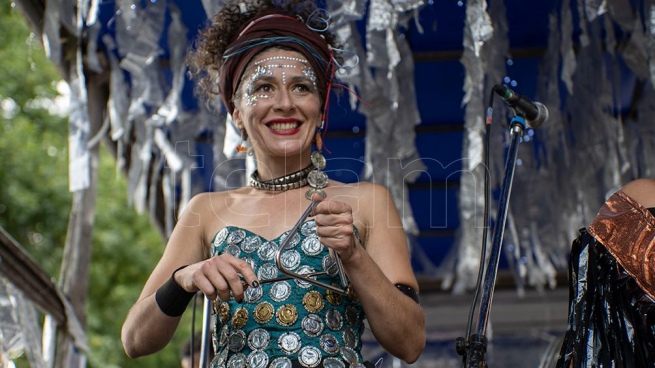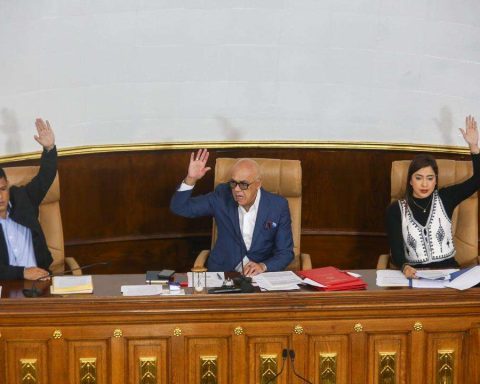Afro-Brazilian rhythms invaded the streets of the Abasto area of Buenos Aires on Saturday, where a thousand people danced batucadas and samba to celebrate and honor the “Carnaval da Rua” (street carnival).
The fifth parade of the street carnival carried out by the Brazilian group “Bloco Cordão de Prata” (Silver Cord group) toured that mythical Buenos Aires tank neighborhood, with its members singing songs of resistance and dressed in black, silver and metal and a musical band that He was marking the rhythm on top of a truck.

This group paraded for the first time in 2017 in the same neighborhood where they celebrated again on Saturday with dozens of Brazilians who had migrated to the City of Buenos Aires.
Led by a musical band that marked the rhythm from the top of a truck adorned with pieces of cables, remains of drums, fabrics, plastic bottles and other recycled elements, the dancers mingled with the colorful costumes and glitter and neighbors who They waved from the balconies.
Julia Cavalcante, a student of traditional Brazilian popular culture and Brazilian music of African origin, is the creator and director of “Bloco”.

“The objective is to reproduce what is the street and popular carnival of Brazil, which is different from the carnival of the Sambadrome where the samba schools parade. Although it began as a street carnival, it is currently commercialized and is not accessible to everyone” Cavalcante told Télam.
The blocos are troupes of different formats and very varied among themselves. “They change completely in the different regions, even in the same city they have different and varied proposals; some bring rhythms from other regions and different musical rhythms,” she added.

The themes range from a political statement to a tribute to a popular artist, from a dance rhythm to a musical style, as well as a tribute to the neighborhood or block of different classes developing the theme they want.
Also “there are different formats of musical production; some only play wind instruments, others are bands of electric guitars or percussion drums that walk,” said the director.

Julia, who was already working in Brazil in the carnivals, arrived in Buenos Aires in 2015, the following year she began with the first rehearsal practices and that is how the “Bloco Cordão de Prata” was created through a percussion workshop. which has the name in homage to the River Plate.
“I had already investigated what carnivals were like here before they were banned by the dictatorship and I noticed that in Buenos Aires the comparsas are separated from the public, which only participates as a spectator; in Brazil the public is part of the party and that is what we try to replicate,” said the director.

The carnivals were prohibited at the beginning of the civic-military dictatorship in March 1976, eliminated from the official calendar of celebrations and their street demonstrations were stopped until 2011, when during the government of Cristina Fernandez de Kirchner they were again declared a national holiday.
The Carnival holidays will be this year on Monday, February 28 and Tuesday, March 1.
In his manifesto, Cordão de Prata points out that “the Bloco was all this time in its Silver Bunker, resisting, producing, reinventing itself so as not to succumb” and affirms that “this year we returned after this experience of entering our subjective worlds, in a world quite unequal, contemporary, capitalist, which is alive, latent and contradictory. Convinced that more natural, organic and ancestral knowledge is increasingly necessary to resist in the urban space”.


















